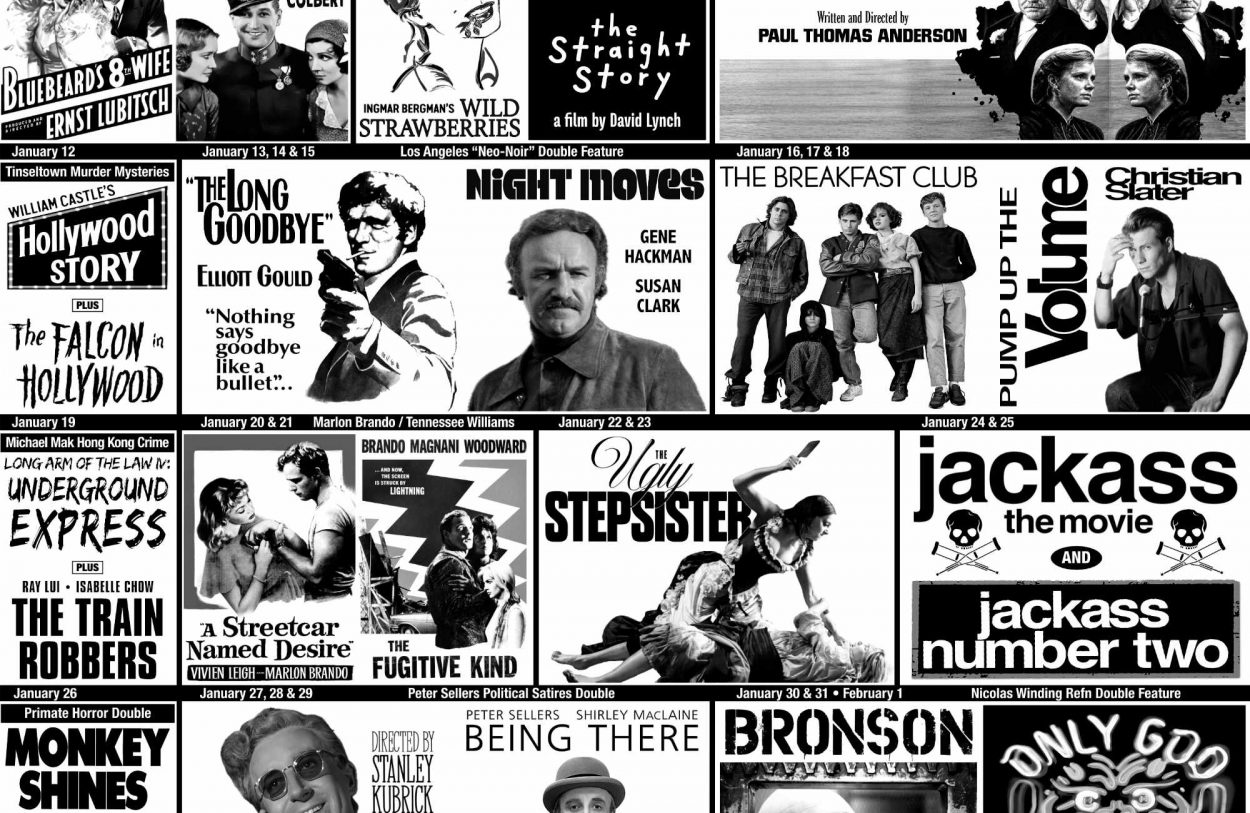“I tend to see the flaws when I re-run my movies and I never really watch my movies again once I finish them, but Excalibur is a film I really can watch, because the power of the story outweighs my reservations about the film that I made and how I dealt with it. It’s such a powerful story it grips me in spite of myself.” – John Boorman
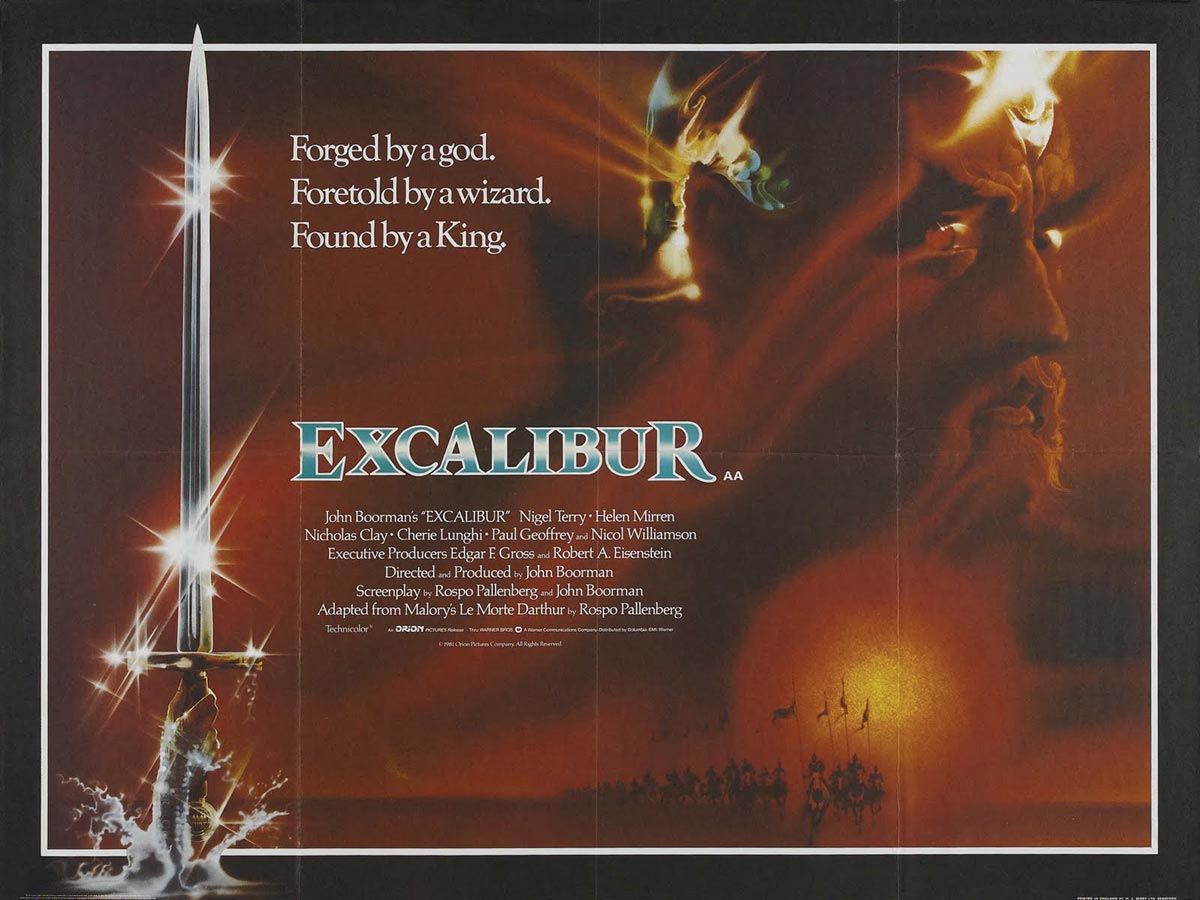
John Boorman’s films have a visual style that are as much a part of the storytelling as the characters themselves, with a career that has seen a movie released in each of the last six decades – Catch Us if You Can (1965), up to his most recent offering to date – Queen and Country (2014). When the great British directors are mentioned, Boorman is always at or near the top of the list, but it’s easy to forget that Boorman is more than a director – he’s a complete filmmaker – having produced 13 of his projects while penning nine of his films.
If there was a focus group taken by John Boorman fans it would be difficult to get a consensus of Boorman’s three greatest films. The two films that overlap the most when talking to fans of the director are: Point Blank (1967) and Deliverance (1972), but given Boorman’s expansive sensibilities within his filmography it’s hard to find a triumvirate that fans of his work would agree on as the writer/producer/director’s definitive trilogy. The anomalous sci-fi head-trip Zardoz (1974) with Sean Connery grew a cult popularity through the 1980’s on home video, and holds a special place in the hearts of Boorman fans, while Hope and Glory (1987) with its Academy Award nominations – Best Picture, Best Director and Best Original Screenplay – certainly has the pedigree for a top three slot. Based on a true story, The Emerald Forrest (1985) has a haunting quality that doesn’t evaporate easily, and is one of the more underrated films of the 1980’s (it holds an 87% rating on Rotten Tomatoes) and has all the director’s stylized hallmarks. There’s the compelling Beyond Rangoon (1995) and the overlooked The General (1998), that only hardcore Boorman fans have seen, however, the film that gave audiences a truly transcendent movie going experience back in 1981, was the medieval fantasy Excalibur.
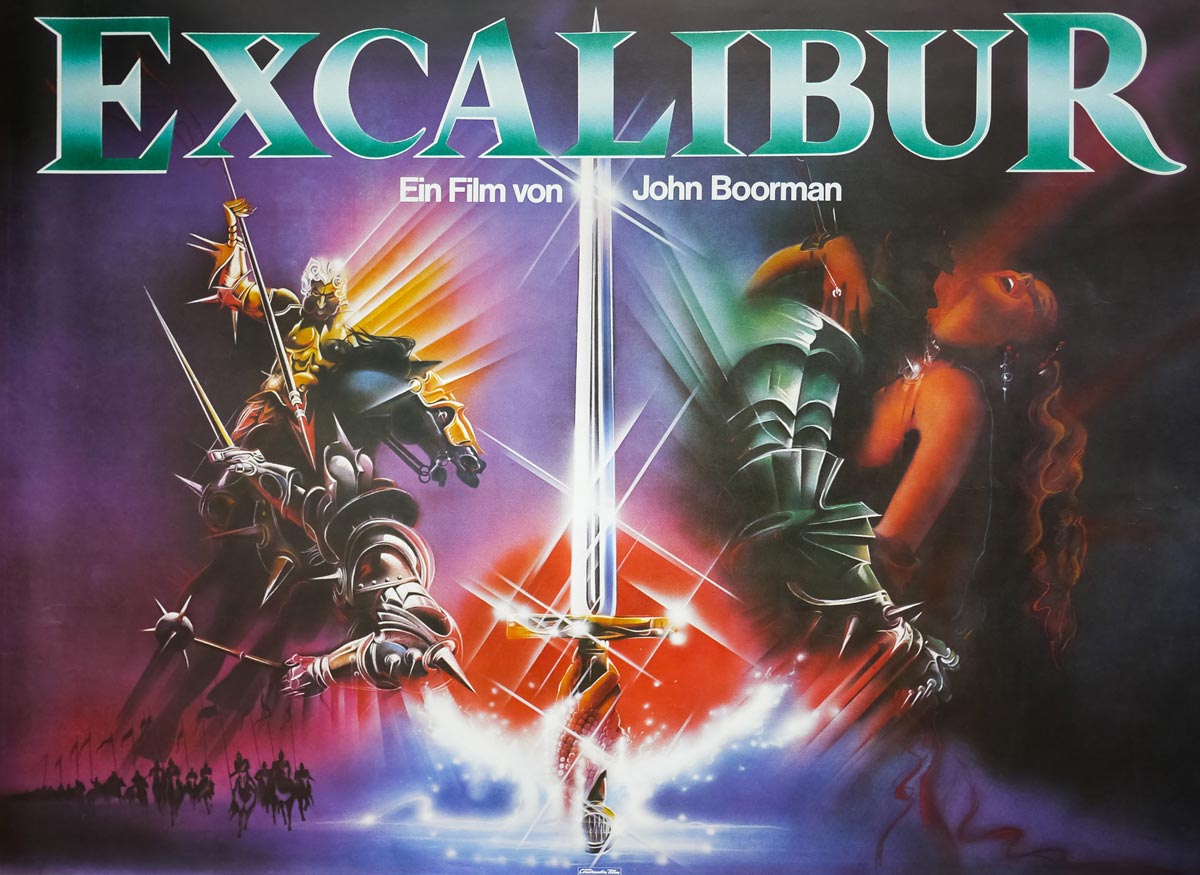
Boorman has said that Excalibur was a film years in the making and, after the director had finished Leo the Last (1970), United Artists passed on his treatment for a script about Merlin, offering him Tolkien’s Lord of the Rings instead – a property that UA had recently acquired. In Boorman’s autobiography, Adventures of a Suburban Boy, he describes the task of adapting the sheer volume of pages in Tolkien’s Rings saga as “daunting,” and with the architect turned screenwriter/collaborator from New York – Rospo Pallenberg – the two men worked out of Boorman’s house in Ireland – where Rospo “pasted every page of Lord of the Rings on to four walls in a room in my house.” The two men immersed themselves into the world of Middle-Earth, making maps and exploring special effects that would be necessary to shoot the project as a live action film – something that Tolkien had hoped would become of his work. Six months later with a script in hand, United Artists had fallen on financial hard times and the project was dead. Years later, Boorman and Rospo were able to use their research and energy invested in Rings on Excalibur – even using locations they had previously scouted for Rings in Ireland.
After Boorman and Rospo had gone through seven drafts, Orion in a distributing partnership with Warner Brothers greenlit Excalibur, and the two men were ready to realize their vision (albeit on a “shoestring budget”). The opening frames of the movie are a backlit-foggy-medieval-noir, with knights on horseback the likes of which nothing the sword and sandal or Arthurian genre had ever seen. Boorman doesn’t ease you into the picture, he transports you into the middle of an evening battlefield centuries ago, in a sequence that was so complex to shoot, that after two unsuccessful attempts proved underexposed, the cameraman had a nervous breakdown and left the film. Alex Thompson, a cinematographer who had fallen on hard times, was subsequently brought in to shoot the film, and he rose to the occasion by capturing Boorman’s vision in such an extraordinary way that he garnered an Academy Award nomination.
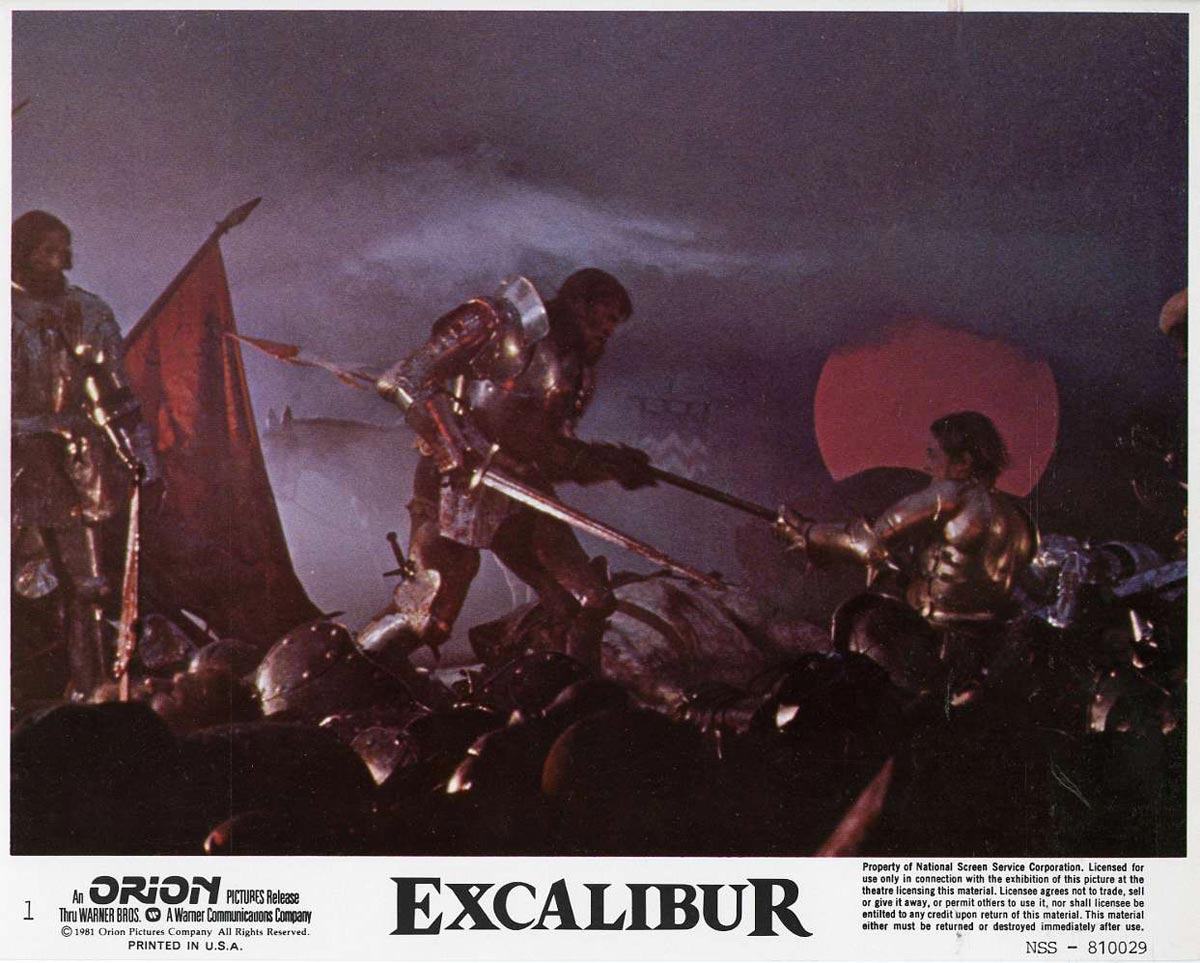
The struggle to pull Excalibur out of the cinematic stone and on to the big screen is evident throughout the film, with its practical locations, misty evening scenes, battle sequences with knights clad in armor while carrying swords on horseback and the painstaking lighting set-ups that give the film its mysterious and ethereal look. Boorman has said that it rained every day of shooting, and while that caused production delays, it provided the greenery that allowed the green filtered light to be shown on the green moss and foliage – resulting in the emerald luminescent quality that is the film’s trademark.
Underneath Excalibur’s armor lies a love story, and not just the triangle between Arthur, Guenevere and Lancelot, but also Arthur’s love for Merlin as his mentor and the idea of Camelot – where noble knights live with honor and the land is bountiful because of the ideals the knights serve to protect under king Arthur’s rule. Boorman launched the careers of several Irish and English actors, many of which he discovered in the theater – Gabriel Byrne (King Uther Pendragon), Liam Neeson (Sir Gawain), Patrick Stewart (King Leondegrance) and Helen Mirren (Morgana). There are critics who deride some of the film’s larger than life performances, however, fans of the film like myself feel there’s a Shakespearean quality to the scenes that matches the stakes of the moody era – supported by the breathtaking scenery shot entirely in the Republic of Ireland (Wicklow, Kerry, Tipperary) and the National Film Studios.
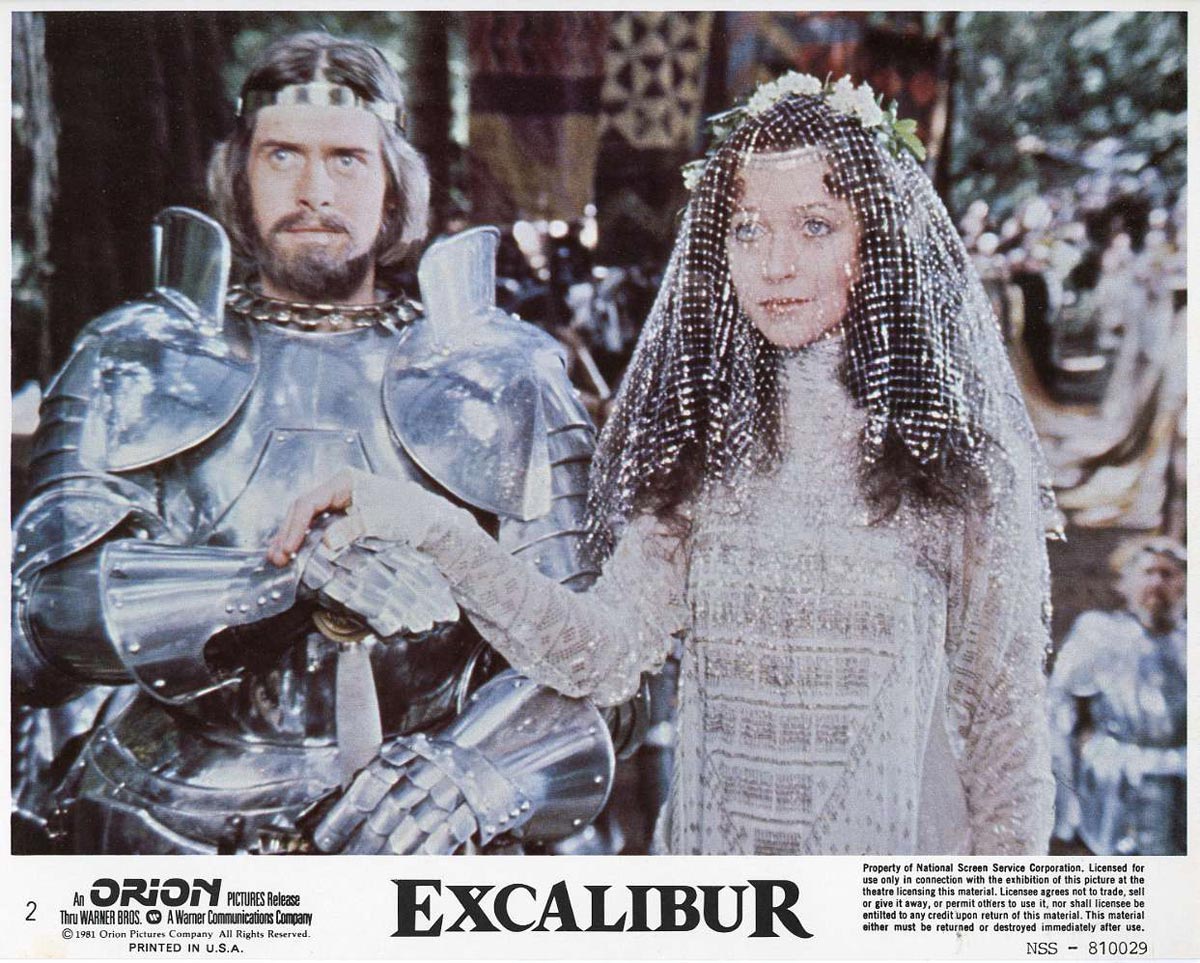
Adapted from Thomas Malory’s Le Morte Darthur by Boorman and Rospo Pallenberg, the ideals of truth, honor and loyalty that the knights aspire to are subverted by three forbidden acts of passion that hold grave consequences and shape the future of the kingdoms. The first begins with Gabriel Byrne as Uther Pendragon, a testosterone gland with a sword, who risks a truce and alliance with the Duke of Cornwall (Corin Redgrave) in order to lay with Cornwall’s wife Igrayne (Katrine Boorman). Uther begs Merlin (Nicol Williamson) to use the Charm of Making and transform him into the Duke’s physical likeness in order to have his way with Igrayne, a rape disguised as consensual congress – something Merlin reluctantly agrees to under the condition that he gets to keep any child that is born of the deceitful act. Igrayne gives birth to a son, and as Merlin absconds with the child who will become king Arthur, he remarks – “The future has taken root in the present.”
The second forbidden act of passion is King Arthur’s betrayal between Guenevere, his wife and Camelot’s Queen (Cheri Lunghi), and his champion knight Lancelot (Nicholas Clay), when the two finally give in to the unrequited love they fought to resist. Arthur’s heartbreak at discovering the two sleeping naked together in the forest leads to a crippling sickness that slowly drains the king’s will to live and spreads to a melancholy pale across the kingdom. Lancelot and Guenevere are forever altered by their act of lust and never return to Camelot.
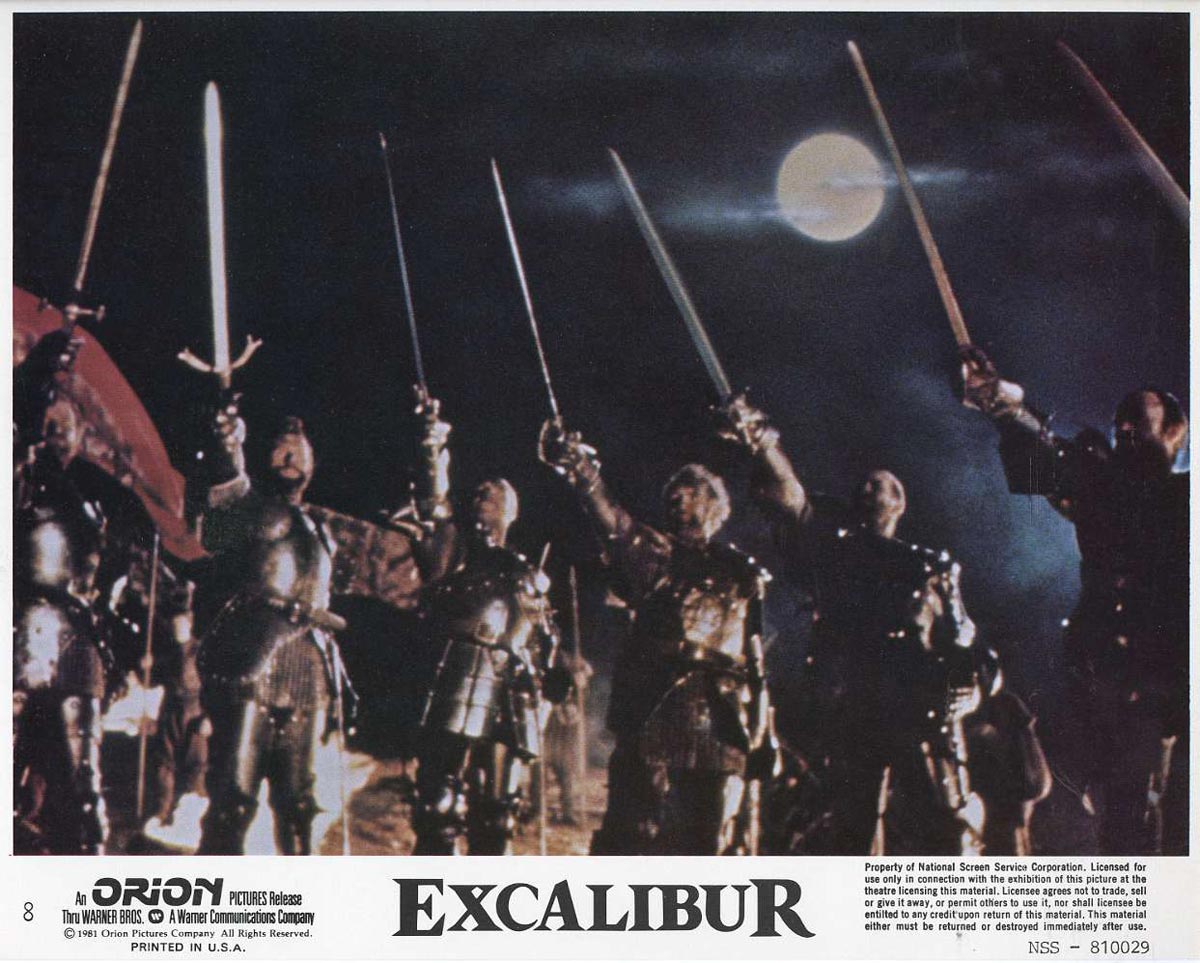
The third forbidden act of passion, perhaps in paying for the sins of his father Uther Pendragon, sees Arthur’s half-sister Morgana (Helen Mirren) take the visage of queen Guenevere, as she seduces the king and gives birth to Modred, an incestuous heir to the throne who is destined to challenge Arthur for the crown. As the kingdom falls under the curse of Morgana and her “unholy child,” the emerald hues are replaced with dull greys and dark shadows as famine and sickness spread through the land. As king Arthur’s health fails him, the quest for the Grail is the only thing that can restore Camelot to its glory. A quest that loses Arthur’s best and bravest knights to the sorcery and dark arts of Morgana, as each of the quest knights fail to bring the Grail back to the king.
Boorman’s weaving of the three forbidden acts of greed and lust into a cohesive story gives Excalibur a darker, sexier telling of the Arthurian legend, that builds into a final battle of redemption for Arthur and his overmatched knights against Modred and his bewitched men. The internal armor that resides inside a knight – truth, loyalty, friendship and love – are what will bind these men in battle as they face their death, and are what stays with audiences as the credits roll. Anthony Pratt’s incredible production design, Terry English’s beautiful armor, and Bob Ringwood’s detailed costumes bring it all to life and it’s captured to perfection through the eyes of cinematographer Alex Thompson.
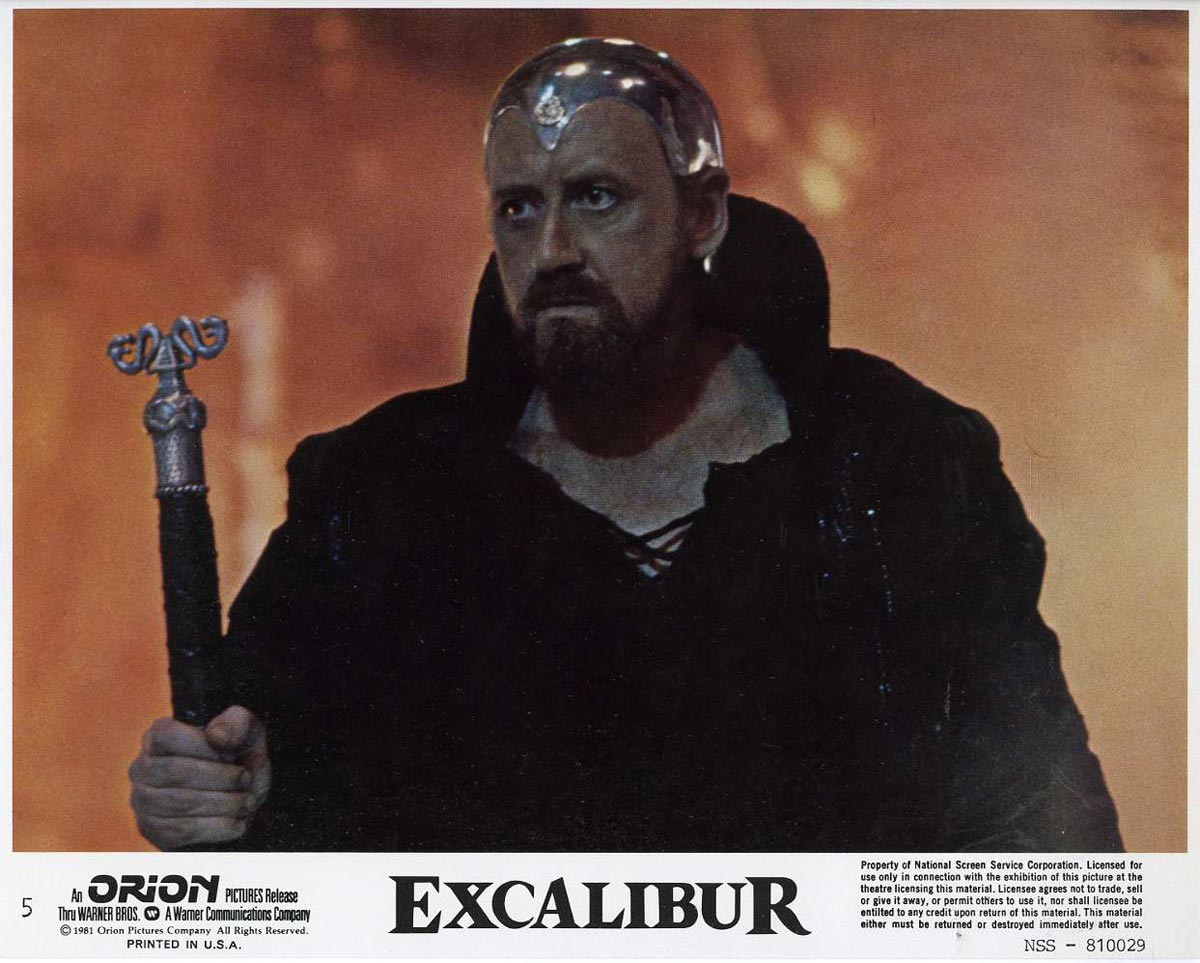
The $11 million-dollar budget for Excalibur is roughly that of one episode of Game of Thrones, and thirty-six years later, Boorman’s quest to bring this story to theaters still holds up. Nigel Terry as King Arthur was 36 years old at the time of filming and does a convincing job of portraying young Arthur from age 16, all the way through the king’s graying old age. Nicholas Clay as Sir Lancelot is every bit the champion in his polished armor with equally polished fighting skills. Cherie Lunghi is mercurial as Queen Guenevere, and it’s hard to fault her when she rides out to the forest to find Lancelot. What gives the film its lasting staying power, however, is Nicol Williamson as Merlin, with his almost sing-song cadence and the burden of knowing that bat wings, snake skins, potions, mandrakes and the dragon’s breath are not long for this world as civilization and science will replace him. Helen Mirren is brilliant as Morgana – an enchantress that waits patiently for her chance to gleam Merlin’s knowledge and ultimately make a run at usurping the throne with her bastard son. Neither Mirren nor Williamson wanted to work together due to an unpleasant experience the two had with one another on Macbeth years earlier, but Boorman sensed their animosity would fit perfectly for their respective roles and the two didn’t disappoint in their performances.
Excalibur came along at a time when science fiction was experiencing a gold rush of sorts, but fantasy movies about knights and the sword being pulled from the stone wasn’t on any studio’s radar. For Boorman, like the knights in search of the Grail, getting his medieval story filmed was a quest of his own he doggedly pursued – “After so many years of struggling to make it, and the two to three years it took me to do it, it was as though it was a kind of destiny I had to make this picture, and having done it, I felt my burden was lightened. I felt a sense of release really.” With an exacting detail, Excalibur can sit at the cinematic round table with Lord of the Rings and Game of Thrones, with a visual virtuosity that sits tall in the saddle with anything shot in the 1980’s. Forged by a god. Foretold by a wizard. Found by a King. Excalibur.


